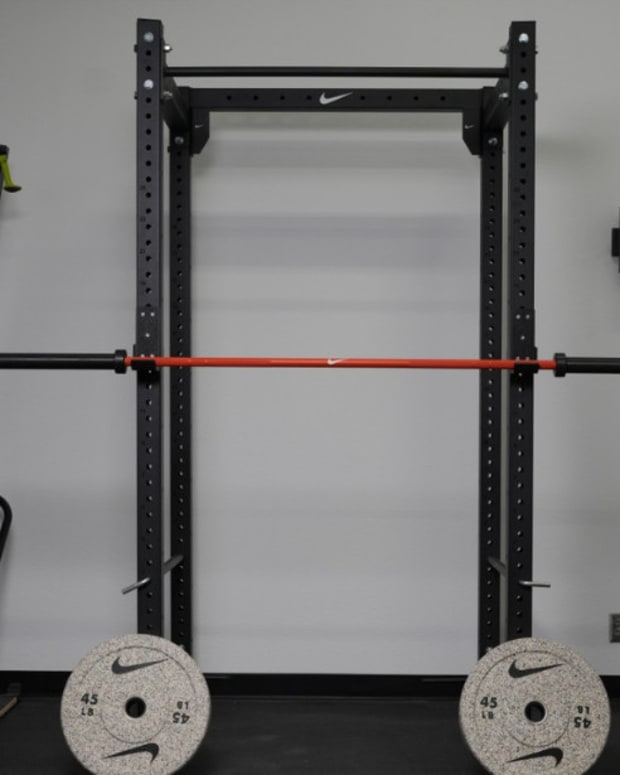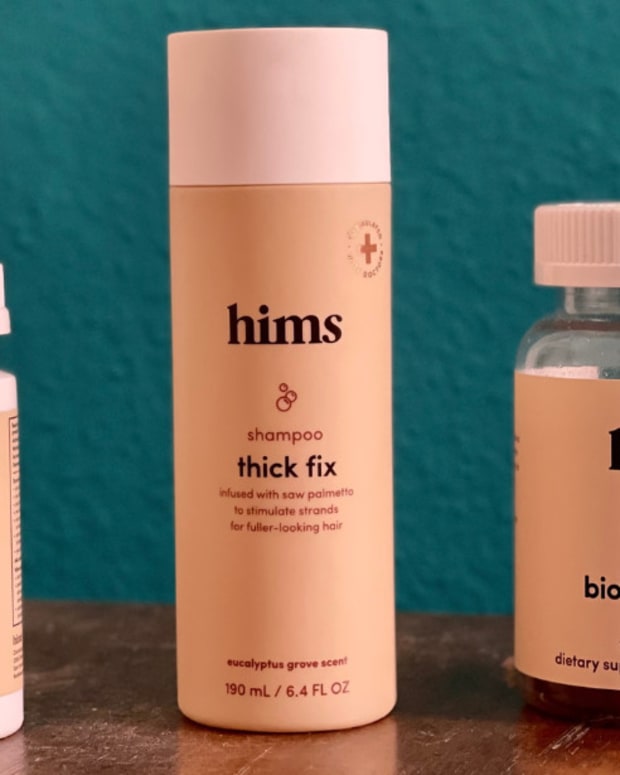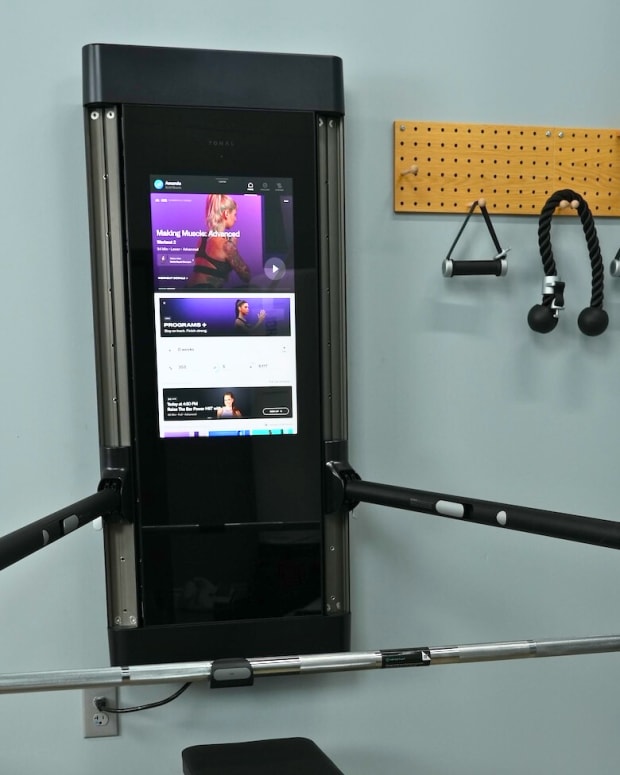The products featured in this article have been independently reviewed. When you buy something through the retail links on this page, we may earn commission at no cost to you, the reader. Sports Illustrated editorial staff are not involved in the creation of this content. Learn more here.
I remember when, like many adolescent girls, I was caught completely off guard by the natural body recomposition of puberty—i.e., suddenly gaining fat. Next thing you know, I was scribbling down the names of (dangerous, since recalled) diet pills from infomercials, looking for a quick fix. I’ve since learned a lot about weight loss strategies, including how off-base I was in even thinking I needed to lose weight, and that experts almost always condemn the latest fad diet pill.
Instead, weight loss is about healthy eating and exercise, with small and consistent changes that with time and the right mindset lead to lasting results. The good news: The best weight loss programs can help you ditch dieting and create habits for long-term success. We tapped Pete Nastasi, certified sports nutrition coach and clinical weight loss practitioner for tips and weight loss strategies that can be applied to benefit health and longevity.
This content is meant to be informative, but should not be taken as medical advice. It is not intended for use as diagnosis, prevention or treatment of health problems. Always speak with your doctor before starting any new supplement or exercise regimen. It’s important to note that weight loss content can be triggering for those with underlying concerns like body dysmorphia, disordered eating or an eating disorder. Please consult your doctor before beginning a weight loss program. Therapy or a more psychological approach to weight management may be needed.
7 Weight Loss Tips
1. Nutrition is the foundation
“The best way to effectively lose weight is through proper nutrition,” Nastasi says. “That's why I always start there with clients.” In Nastasi’s 10-week weight loss program, physical activity, such as using cardio machines for weight loss, isn’t even touched upon until week seven. “It's just far more important to get their diet in check.”
Nastasi says he tries not to tinker too much, too fast with people's diets. Instead, the idea is to “cut out maybe one or two things that might not be the best for them, and slowly add nutrient-dense foods.” Examples of nutrient-dense foods include whole grains, fruits, vegetables and lean proteins. One good way to ease yourself into dietary changes? Use the challenge as an excuse to try fun and novel healthy foods.
2. Ditch your fitness tracker
There’s a term in marketing to “underpromise and overdeliver.” Unfortunately, your fitness tracker didn’t get that memo. “It’s one of the biggest misfires I see,” Nastasi says. “People are working out to burn calories, but they’re severely overestimating the amount they’re burning at the gym.” Nastasi says he thinks fitness trackers are a big contributor, and studies back his suspicion.
Of course, we’re not really saying ditch your fitness tracker. They’re still a great tool that can be helpful in tracking workout distance and duration or other health metrics like water intake. Just be sure to take the estimated calorie burn with a grain of salt if your goal is to be in a daily calorie deficit.
3. Focus on body recomposition
There’s a flip side to the workout-calorie burn paradigm: If you’re doing a tremendous amount of cardio but not properly refueling, you may be hindering the muscle-building process. “That’s the major issue when we talk about weight loss,” Nastasi says. “We really want to be losing fat, not weight.”
In fact, losing fat and building muscle go hand-in-hand. If you’re utilizing the scale, you may even see slight weight gain—but that’s no reason to panic. You’ll be able to see the results in the mirror, in the way your clothing fits or in the way you feel.
Muscle growth and body recomposition are clutch weight loss strategies because of the added passive calorie burning your body will be churning out. “If we take two 200 pound guys, and one is 10 percent body fat and the other is 20 percent body fat, the guy with the 10 percent body fat is going to have a higher caloric daily burn,” Nastasi says. And that added burn, i.e. higher basal metabolic rate, can also help keep your body weight stable as you age and naturally lose muscle.
The idea of strength training can be daunting for beginners, and that’s where personal training apps can fill the knowledge gap. Apps such as Future take it a step farther, providing one-on-one guidance from a trainer to create a personalized resistance training regimen that works with the equipment you have in your home gym. .
4. Pump up the protein
On the topic of properly refueling to build muscle, protein is king. In fact, for literal molecular reasons, protein contributes to weight loss in more ways than one. You can dive into the nitty gritty of the elemental science that explains how protein is superior to carbohydrates for weight loss. But for those who’d rather not revisit high school chemistry, just know that as a weight management tool, protein should be crowding your plate. Often, Nastasi recommends supplementing with a protein powder, specifically brands that use whey protein isolate. “It’s got a very high protein to calorie ratio, as opposed to a whey protein concentrate,” he says.
You still want to get lean protein from whole foods, like skinless chicken or turkey, white fish and Greek yogurt. If the idea of grocery shopping and meal planning is daunting, it may be a good idea to try a meal delivery service that focuses on a high-protein diet.
Related Post: The Best Meal Delivery Services for Weight Loss
Our Favorite Protein Powders for Weight Loss
Transparent Labs Organic Vegan Protein
Rice and pea, the protein source in Transparent Labs Organic Vegan Protein, combine to make a complete amino acid profile. You can choose a french vanilla or chocolate flavor to suit your tastes. But don’t worry about added calories: The blend is sugar-free, sweetened with stevia.
XWerks Grow
XWerks Grow is another excellent low-carb protein source. The blend keeps carbs out by using a whey protein isolate, rather than a less protein dense whey protein concentrate. Sweetened with stevia, you can buy the powder in strawberry, chocolate, vanilla or peanut butter flavors.
Swolverine Plant Protein
Pumpkin and pea are the protein pairing in Swolverine’s Plant Protein, providing a solid 22 grams of the protein per serving. The blend also features prebiotics for added gut health benefits. Choose from chocolate cake or salted caramel flavors.
5. Harness your surroundings
Psychology and the environment controls a lot of our eating habits and cravings. For example, stocking the most prominent areas of your fridge with low-calorie, low-carb foods is a simple way to guide your hand toward grabbing a handful of grapes rather than a pudding cup.
Here’s another example: When I was using Noom, I implemented one of the app’s trademark psych tips that smaller plates can trick yourself into eating fewer calories (and seized on the uncomfortable change as an opportunity to buy dishware I had been eyeing). Following that same “out of sight, out of mind” mantra, I placed tea prominently on the counter, making it the first thing I reached for when I was seeking more of a distraction than satiety.
6. Find your motivation by tracking your progress
A lot of us have been there. You want to check-in on your health, but the mere act of stepping on the scale makes your blood pressure rise. However, it’s a fear you may want to get over to execute a successful weight loss plan, as confirmed by multiple studies.
But the scale isn’t the only metric to keep you accountable, and you really shouldn’t overthink the number. In fact, fit, muscular people can even end up being clocked in the obesity range based on body mass index (BMI), a common measure to determine health based on your height to weight ratio. It’s important to note that many health experts consider the BMI to be an outdated and inaccurate measure of someone’s health.
“If you have an athletic performance goal, or smaller weight loss goals, then we're not going to look to see that crazy jump on the scale,” Nastasi says. “In fact if we do, that's something we should worry about.”
So whether it’s the scale, the way your clothes fit or journaling your everyday energy levels, find a way to track progress that suits you. For example, Nastasi’s preferred metric is visual. “I’m a big fan of progress pictures because even if you don’t see the numbers on the scale changing, you’ll start seeing the visual changes probably within four to six weeks.”
Related Post: The Best Smart Scales
7. Slow and steady wins the race
Big things have small beginnings. The same can be said of long-term weight loss, which goes relatively quickly even over the course of a year. And most important, “you never get to that point where you're absolutely miserable,” Nastasi says.
And there’s more than an emotional consequence to the misery you’ll feel if you attempt short-term, crash dieting repeatedly. “There have been countless studies showing that every time you yo-yo diet and fluctuate, it becomes harder and harder to lose weight after that. So you need to go into a steeper caloric deficit to see results,” Nastasi says.
Not to mention, the shame spiral can lead to overeating. To break that nasty feedback loop, it’s all about a slow and steady path of incrementally choosing healthier foods rather than drastically reducing your caloric intake for a short amount of time. This unsustainable practice can make it harder to lose weight in the future, and may even be dangerous to your health. Thinking of food as fuel for your body and mind, rather than making it an enemy, can be a good place to start.
Are There Differences in Weight Loss Strategies for Women vs. Men?
It’s worth addressing a commonly posed question about weight control: Are there significant differences between men and women? Nastasi says in his experience, not really. “The only exception where that would change is based on age. So for a client who’s perimenopause or postmenopause, there’s some tougher metabolic characteristics at that point. But for the most part, I don't really have a different approach—there's really no difference metabolically,” he says.
The Bottom Line
Losing weight can have a myriad of health benefits. You can lower your blood sugar and risk of heart disease and improve cardiovascular health and muscle mass, which strengthens your bones as you age. But having said that, your weight is not the be-all and end-all. There are lots of other markers of health, including blood pressure, cholesterol levels and indicators of type 2 diabetes.
Before you embark on any type of lifestyle change that involves a restricted calorie diet or the addition of aerobic exercise, you should always talk to your primary care physician. Consulting with a registered dietitian is also a great way to set yourself up on a healthy weight loss plan for long-term success.
Prices are accurate and items in stock as of publish time.












